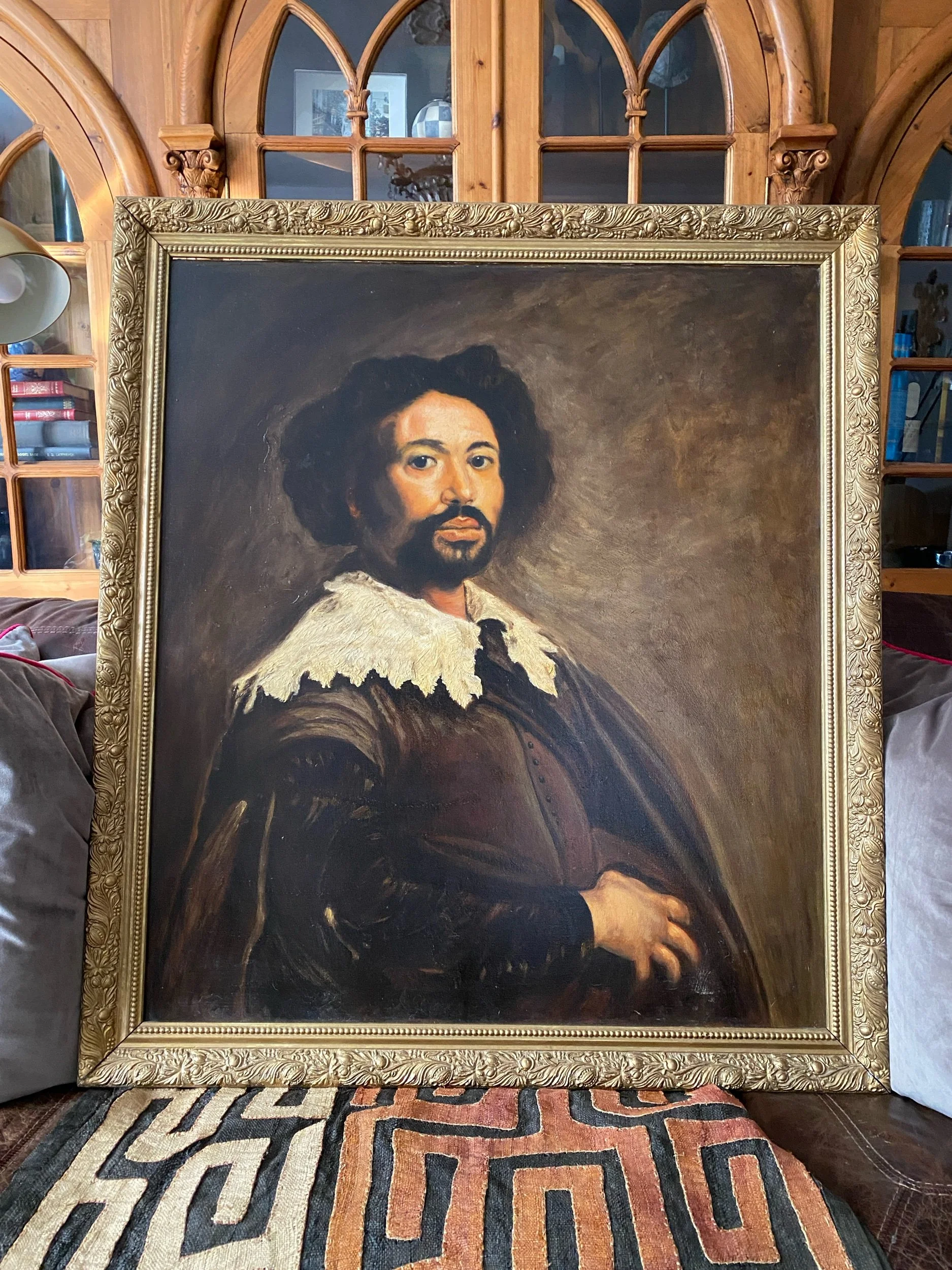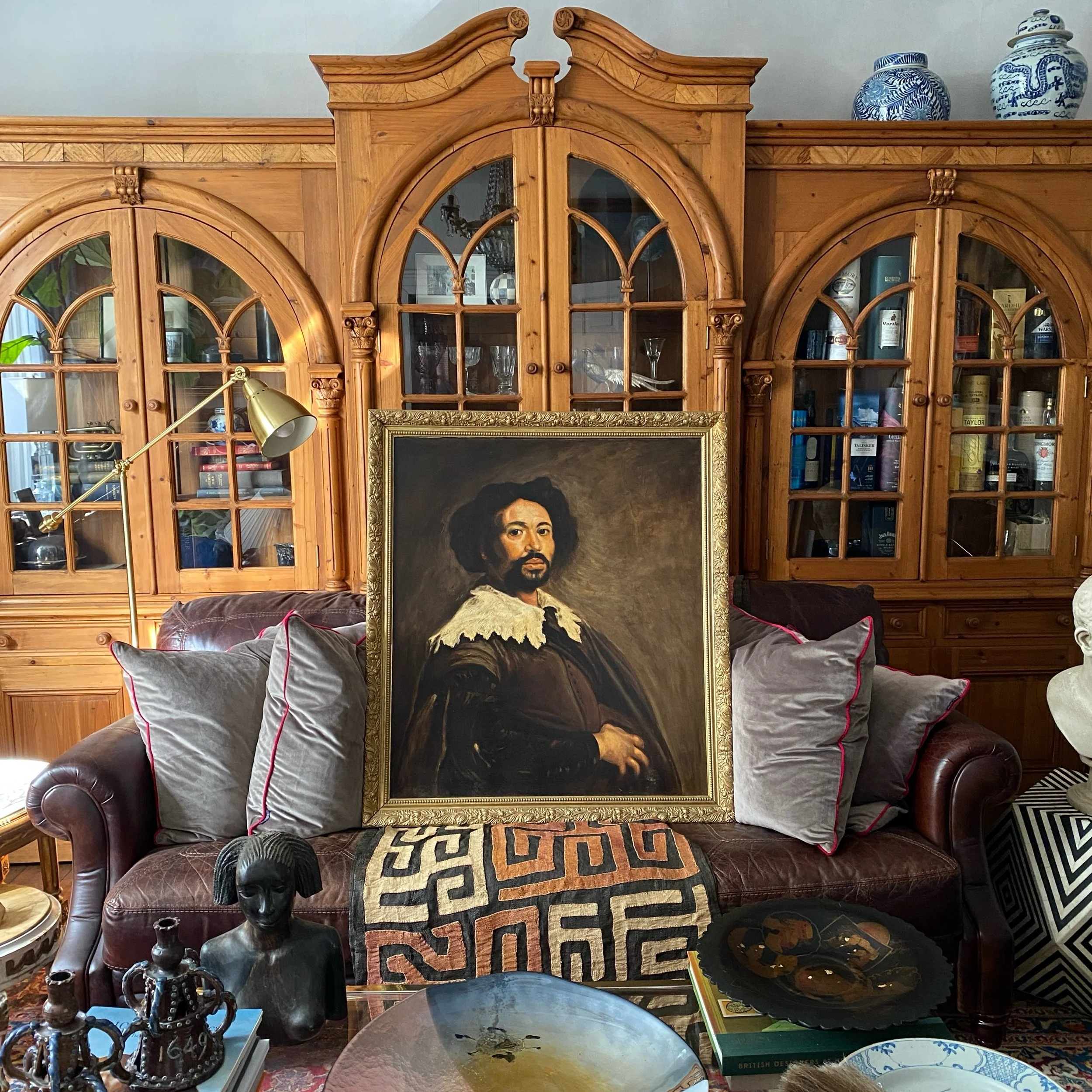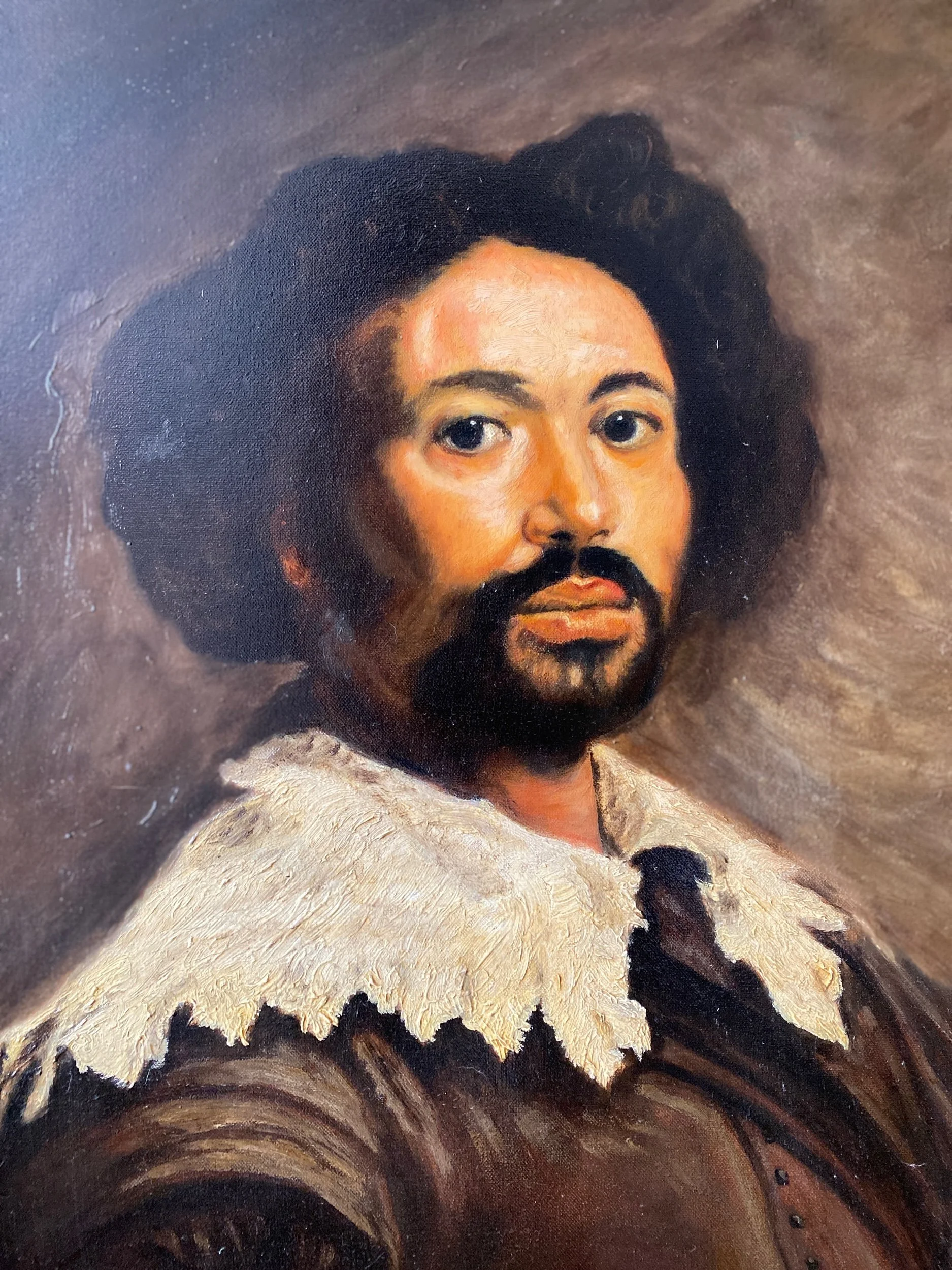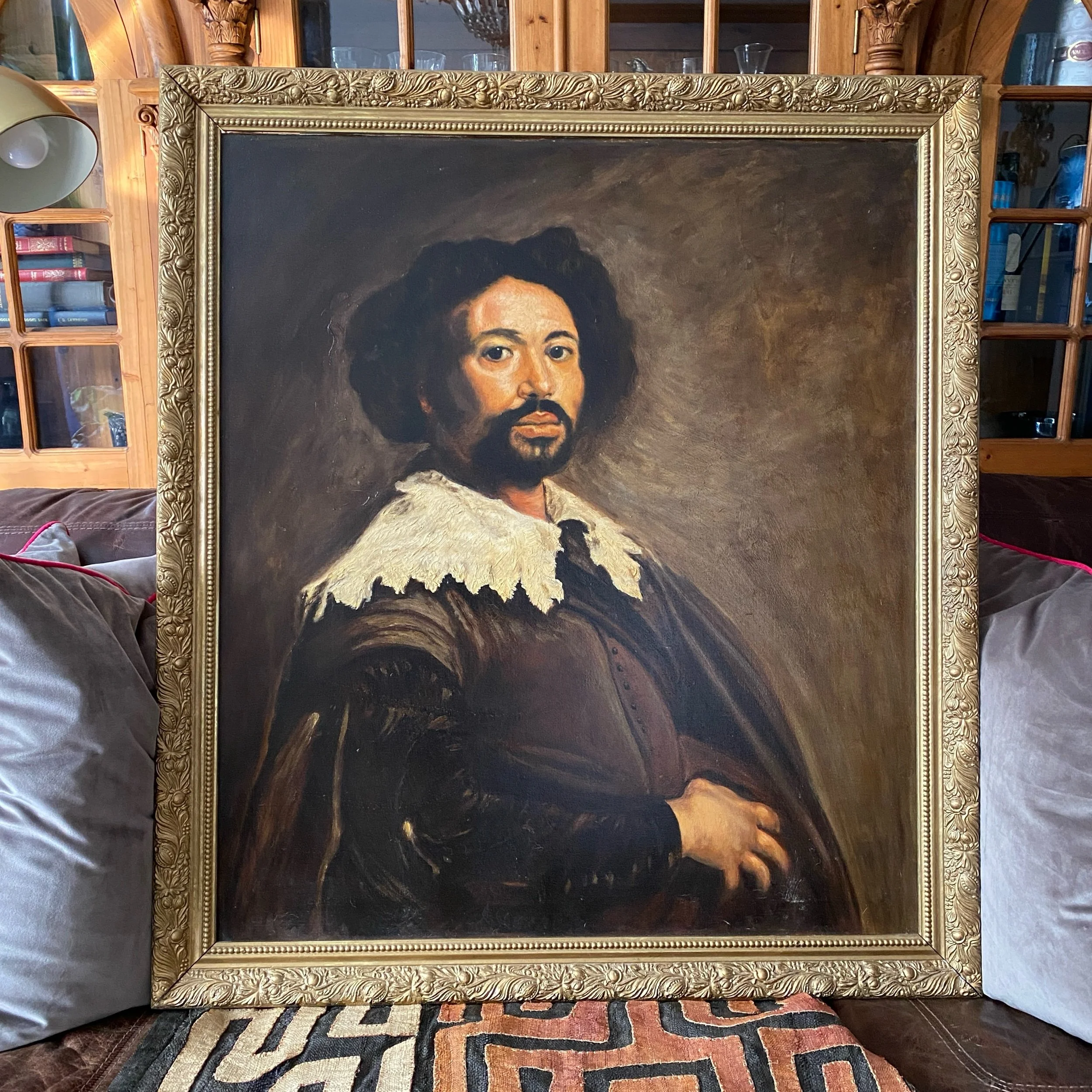 Image 1 of 4
Image 1 of 4

 Image 2 of 4
Image 2 of 4

 Image 3 of 4
Image 3 of 4

 Image 4 of 4
Image 4 of 4





Striking 20th century oil painting after “The Portrait of Juan de Pareja”
Striking 20th century oil painting after 17th century “The Portrait of Juan de Pareja,” by Spanish artist Diego Velázquez.
Oil on canvas, framed in a wooden carved frame with gold gilting. Overall measurements of 82cm x 93cm.
Free UK mainland shipping. International shipping available.
The portrait by Velázquez is of the enslaved Juan de Pareja, a notable painter in his own right, who was owned by Velázquez at the time the painting was completed. Velázquez painted the portrait in Rome, while traveling in Italy, in 1650. It is the earliest known portrait of a Spanish man of African descent.
In 1649, as court painter to Philip IV of Spain, Diego Velázquez was sent to Rome to purchase works of art for the Alcázar in Madrid. Velázquez brought with him Juan de Pareja, an enslaved man, who served as an assistant in the artist's workshop. During his stay in Rome, Velázquez executed an oil painting of Juan de Pareja, which was displayed as part of a larger exhibition of paintings at the Pantheon on 19 March 1650. According to Antonio Palomino's biography of Velázquez, the painting "was generally applauded by all the painters from different countries, who said that the other pictures in the show were art but this one alone was 'truth'.
Striking 20th century oil painting after 17th century “The Portrait of Juan de Pareja,” by Spanish artist Diego Velázquez.
Oil on canvas, framed in a wooden carved frame with gold gilting. Overall measurements of 82cm x 93cm.
Free UK mainland shipping. International shipping available.
The portrait by Velázquez is of the enslaved Juan de Pareja, a notable painter in his own right, who was owned by Velázquez at the time the painting was completed. Velázquez painted the portrait in Rome, while traveling in Italy, in 1650. It is the earliest known portrait of a Spanish man of African descent.
In 1649, as court painter to Philip IV of Spain, Diego Velázquez was sent to Rome to purchase works of art for the Alcázar in Madrid. Velázquez brought with him Juan de Pareja, an enslaved man, who served as an assistant in the artist's workshop. During his stay in Rome, Velázquez executed an oil painting of Juan de Pareja, which was displayed as part of a larger exhibition of paintings at the Pantheon on 19 March 1650. According to Antonio Palomino's biography of Velázquez, the painting "was generally applauded by all the painters from different countries, who said that the other pictures in the show were art but this one alone was 'truth'.